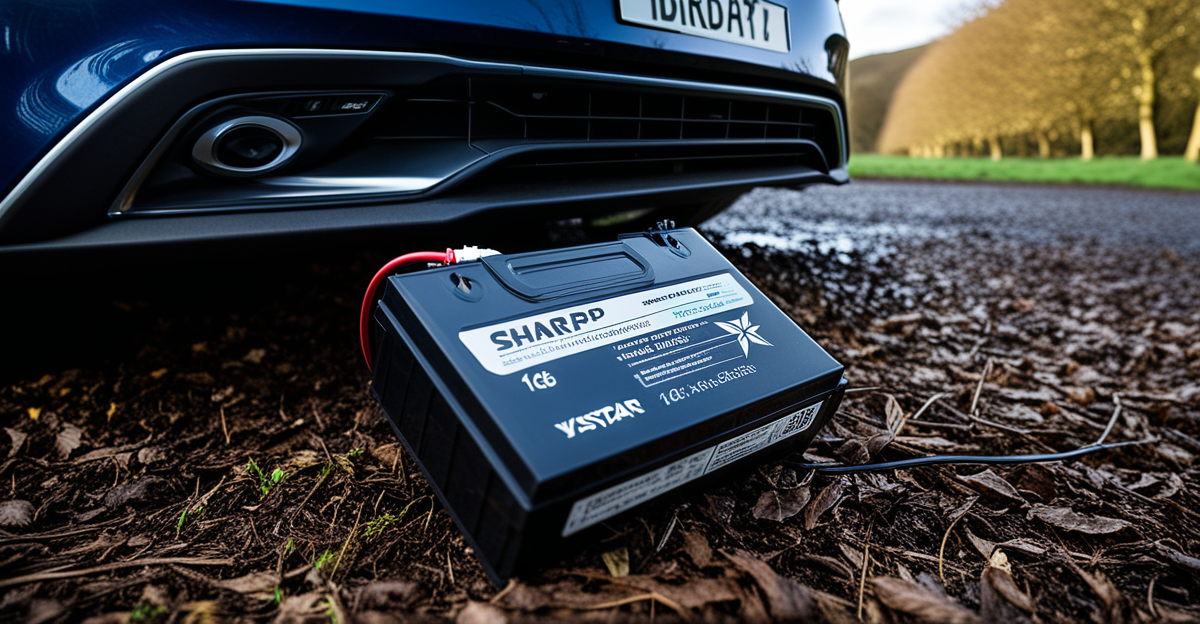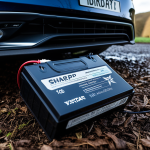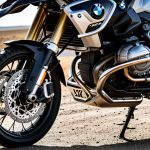Understanding Electric Vehicle Battery Mechanics
Electric vehicle batteries are the heart of EV technology, and their efficiency is critical to vehicle performance and longevity. At the core of this efficiency is battery chemistry, which defines how batteries operate and store energy effectively. The main types of batteries used in electric vehicles include lithium-ion, nickel-metal hydride, and solid-state batteries. Each type has unique characteristics, advantages, and challenges that affect their efficiency and overall utility in electric vehicles.
One essential aspect of battery performance is the impact of temperature effects on battery chemistry. Temperature plays a significant role in the physical and chemical processes within the battery, affecting its capacity and charging efficiency. For instance, in extreme cold, the battery’s ability to hold a charge and deliver power is hindered, leading to reduced range and slower charging rates. Conversely, warm temperatures can enhance battery chemistry, improving electric vehicle battery efficiency by reducing internal resistance and increasing conductivity.
Avez-vous vu cela : Comprehensive Guide to Selecting the Safest Vehicles for Teen Drivers in the UK
Seasonal variations pose unique challenges to electric vehicle battery performance. In regions with significant temperature fluctuations, such as the change from winter to summer, these effects can be pronounced. During cold months, for example, EV owners may notice a substantial decrease in battery efficiency, necessitating adjustments in driving habits and charging routines to maintain performance. Thus, understanding the mechanics of electric vehicle batteries and the role of temperature is pivotal for manufacturers and users alike to optimize battery life and vehicle longevity.
Impact of Cold Weather on Battery Performance
Cold weather significantly impacts battery range reduction and overall EV performance. Scientific studies have shown that EV batteries can lose more than 20% of their capacity when temperatures drop significantly, affecting both the range and charging efficiency of the vehicles. This reduction in capacity is primarily due to the slowed chemical reactions in the battery at low temperatures, which impede the flow of energy, ultimately diminishing available range.
Lire également : Boosting Road Safety in the UK: The Impact of Dashboard Cameras on Driving Laws
Moreover, cold temperatures can severely slow the charging process. When an EV is charged in cold weather, the battery management system may restrict the charging rate to prevent damage, resulting in longer charging times. This is not only inconvenient for EV users but can also affect daily usage patterns, necessitating careful planning to avoid running out of power.
Real-world examples illustrate the challenges faced by EV owners during winter months. In regions with harsh winters, drivers report noticeable reductions in range and performance of their electric vehicles. Such conditions force users to adopt strategies, like pre-conditioning their EVs, to mitigate cold weather effects. Understanding the cold weather effects on EVs is crucial for optimizing range and maintaining performance throughout the winter season.
Seasonal Temperature Range in the UK and its Effects
Understanding the UK climate and its seasonal temperature variations is crucial for assessing the impact on electric vehicle (EV) battery performance. The UK experiences a maritime climate, characterized by moderate temperatures with relatively mild summers and cool winters. This climate results in less extreme temperature changes compared to continental Europe or North America.
Analysis of Average Seasonal Temperatures
The average temperature ranges in the UK fluctuate reasonably within the seasons, offering a unique context for studying the effects of temperature on EVs. During winter, temperatures hover just above freezing, usually between 0°C and 7°C, which can affect the efficiency and range of EV batteries. Conversely, summer temperatures range from 14°C to 21°C, conditions under which battery performance and charging efficiency tend to improve.
Historical Weather Patterns Affecting EV Usage
Historically, the UK’s seasonal temperature variations have posed specific challenges for EV owners. In winter months, cooler temperatures lead to reduced battery efficiency, impacting vehicle range and necessitating revised driving habits. On the other hand, the milder conditions of spring and autumn allow for more predictable battery performance, reducing the impact of temperature effects on EV utility. This highlights the importance of both seasonal optimization and understanding environmental conditions for users and manufacturers alike.
The Benefits of Warmer Seasons for Electric Vehicle Batteries
Increased temperatures during the warmer months can significantly enhance battery performance for electric vehicles. Warm weather effects contribute to improved charging efficiency and a potential increase in the longevity of battery life. When temperatures rise, the chemical reactions within the battery occur more readily, reducing internal resistance and allowing for more efficient energy storage and output.
Data from Warmer Months
Data indicates that throughout the warmer months, electric vehicle batteries exhibit better charging conditions. This results in shorter charging times and enhanced range due to improved battery chemistry. The conductive properties of the battery materials are optimized in higher temperatures, facilitating better energy flow and utilization.
Optimal Temperature Conditions and Battery Life
Optimal temperature conditions during these warmer periods can also lead to a potential increase in the life of the battery. Consistent improved performance without the stressors associated with extreme cold can mean fewer cycles of deep discharge and reduced strain on the battery components, ultimately promoting battery longevity. By operating within these temperature sweet spots, electric vehicle users can expect both better day-to-day performance and an extended lifespan of their battery systems.
Practical Implications for EV Users
Electric vehicle users face distinct challenges depending on seasonal optimization and weather conditions. Effective battery care requires tailored strategies to maintain electric vehicle battery efficiency throughout the year.
Tips for Optimizing EV Range in Cold Weather
When navigating cold weather effects, EV users should focus on maintaining a warm battery environment. Pre-conditioning the car while it’s plugged in can improve battery temperature without depleting storage levels. Limiting high-speed travel and maximizing regenerative braking also help conserve energy and maintain better battery performance.
Best Practices for Battery Maintenance Year-Round
Consistent upkeep is essential. Regularly checking battery health and keeping the charging ports clean can prevent efficiency drops. EV users should avoid frequent deep discharges to prolong battery lifespan, and using a level 2 charger instead of rapid charging can be beneficial as well.
Recommended Charging Strategies Based on Seasonal Changes
Understanding temperature effects aids in developing efficient charging routines. In winter, charging at night in a garage prevents extreme temperature exposure. During warmer months, midday charging under direct sunlight may shorten charging times due to improved charging efficiency. By adopting these EV user strategies, vehicles remain reliable, offering optimal performance throughout the year.
Manufacturer Adaptations to Seasonal Variations
Electric vehicle (EV) manufacturers are continually innovating to mitigate the influence of seasonal changes on battery performance. By focusing on battery technology advancements, they aim to reduce efficiency drops associated with fluctuating temperatures, ensuring that EVs remain reliable and efficient regardless of climate conditions.
One significant area of advancement is the development of adaptive battery management systems. These systems intelligently adjust charging and discharging parameters based on temperature, enabling optimal performance in both cold and warm environments. Additionally, manufacturers are exploring thermal management solutions that maintain batteries at optimal temperatures, thus preventing the detrimental effects of extreme weather on battery chemistry.
Furthermore, regional climate assessments are becoming a crucial component of design consideration for manufacturers. By understanding the specific seasonal demands of different geographic regions, manufacturers can tailor EV models to better withstand local climate conditions, offering customized solutions that enhance user experience and vehicle reliability.
The role of seasonal testing is indispensable in the development cycle of new EV models. Rigorous testing under varied climatic conditions allows manufacturers to evaluate the performance and resilience of their vehicles, ensuring that new models can meet, if not exceed, user expectations throughout the year. This commitment to testing and adaptation underscores the industry’s dedication to delivering robust and efficient electric vehicles that cater to the diverse needs dictated by seasonal temperature variations.
Future Research Directions
In the ever-evolving field of electric vehicles (EVs), identifying future research directions is pivotal for advancing battery resilience and efficiency. Current gaps in understanding the full scope of climate impact on EV performance necessitate targeted studies to address these issues. One significant area for further investigation is battery research focusing on how extreme weather patterns influence battery chemistry and performance over time.
A promising path in this research involves developing advanced battery materials that can withstand and adapt to various climatic conditions. Exploring solid-state battery technology, known for its stability and safety, might offer solutions to temperature-related challenges faced by conventional lithium-ion batteries. Moreover, future studies should aim to enhance the durability of battery life under diverse environmental stressors, ensuring consistent EV performance irrespective of seasonal changes.
Continuous data collection forms the backbone of these efforts, providing insights that inform innovative technologies tailored to global climatic variations. By bridging these knowledge gaps, the industry can improve the electric vehicle battery efficiency and, consequently, the overall EV performance. Such proactive research initiatives are crucial for equipping EVs to meet the demands of a rapidly changing climate, ensuring they remain a reliable and sustainable mode of transportation worldwide.









